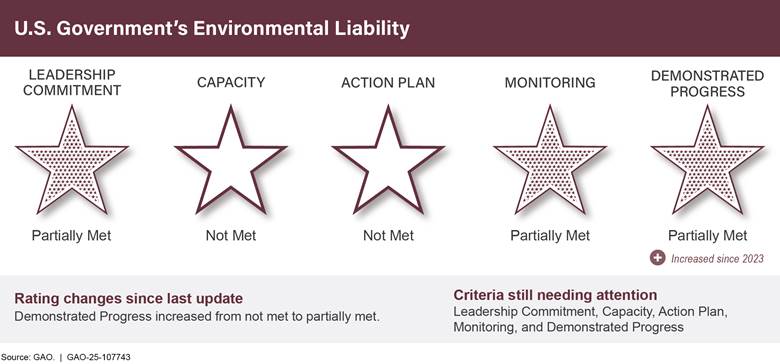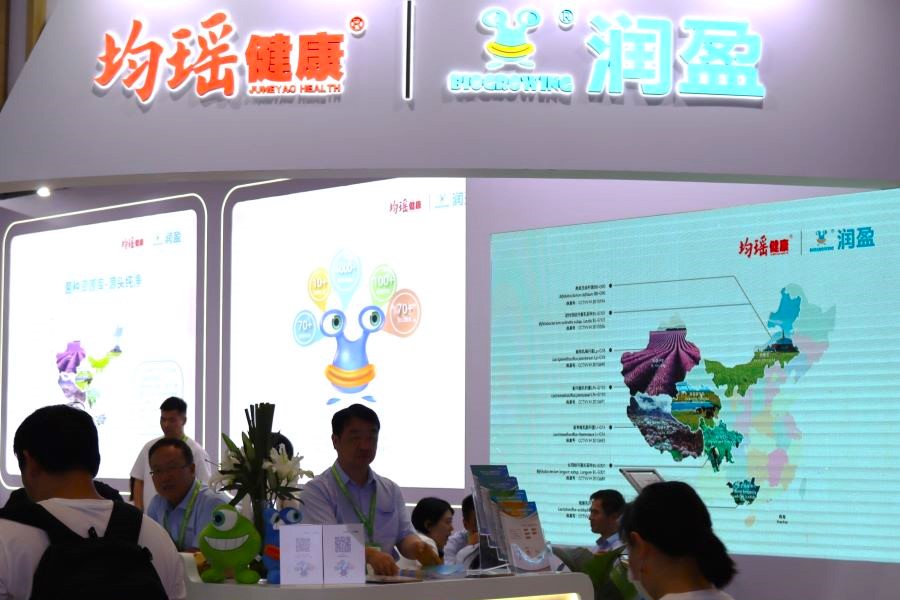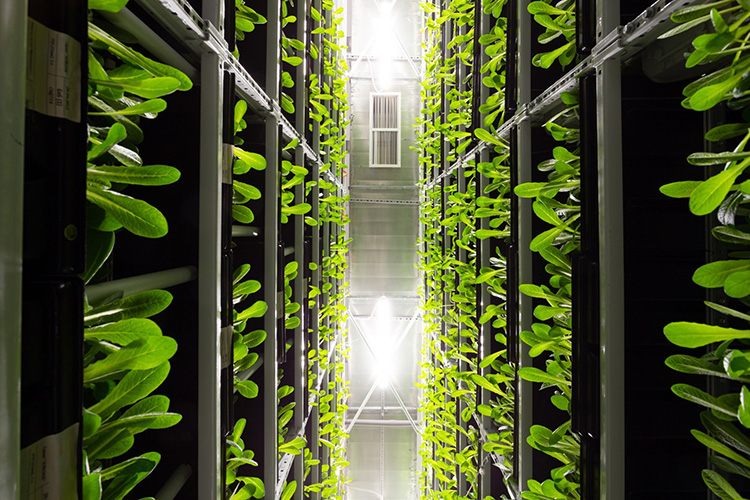Report on Quantum Dot Glass Technology and its Contribution to Sustainable Development Goals
Introduction: Advancing Sustainable Agriculture through Photonic Innovation
A peer-reviewed study, funded by the U.S. Department of Agriculture and conducted at the University of California, Davis, has validated a new quantum dot (QD) laminated glass technology developed by UbiQD, Inc. The findings, published in Materials Today Sustainability, demonstrate that the UbiGro® luminescent glass passively enhances crop yield, nutrient uptake, and resource efficiency in controlled-environment agriculture (CEA). This report analyzes the study’s findings with a specific focus on their alignment with and contribution to the United Nations Sustainable Development Goals (SDGs).
Key Findings and Alignment with Sustainable Development Goals
The study compared lettuce growth over a full winter cycle in two matched greenhouses: one with standard glass and one with UbiQD’s QD-laminated glass. The greenhouse utilizing the QD technology demonstrated significant improvements, directly supporting several key SDGs.
-
Increased Crop Yield and Quality (SDG 2: Zero Hunger)
- Fresh biomass increased by 37.8%, and plant weight increased by nearly 40%, directly contributing to Target 2.4 by ensuring sustainable food production systems and implementing resilient agricultural practices that increase productivity and production.
- Nutrient concentrations, including Nitrogen, Phosphorus, Potassium, and others, were significantly elevated. This addresses Target 2.2, which aims to end all forms of malnutrition.
-
Enhanced Resource Efficiency (SDG 7, SDG 12, SDG 6)
- Light-use efficiency increased by 41.0%, meaning more biomass was produced per unit of sunlight. This supports SDG 7 (Affordable and Clean Energy) by maximizing a passive energy source and reducing the need for supplemental artificial lighting, and SDG 12 (Responsible Consumption and Production) by promoting the efficient use of natural resources.
- Root length increased by 38.0%, improving water and nutrient uptake. This contributes to SDG 6 (Clean Water and Sanitation) by enhancing water-use efficiency in agriculture, a sector responsible for approximately 72% of global freshwater withdrawals.
-
Optimized Photosynthetic Conditions
- The spectral red:blue ratio of sunlight was increased by 61.0% without significant loss of Photosynthetically Active Radiation (PAR). This demonstrates a technical advancement in optimizing growing conditions passively.
- Leaf area increased by 38.0%, providing a larger surface for photosynthesis and contributing to the overall increase in biomass.
Technological Contribution to Global Challenges
The UbiGro glass technology represents a significant innovation for addressing the interconnected challenges of global food, energy, and water security. Its application aligns with multiple strategic development objectives.
- SDG 9 (Industry, Innovation, and Infrastructure): The development of QD-integrated structural glass is a prime example of upgrading industry and infrastructure for sustainability (Target 9.4). It integrates advanced materials science into agricultural infrastructure to enhance productivity and resource efficiency.
- SDG 13 (Climate Action): By improving yields and energy efficiency in greenhouses, the technology promotes climate-smart agriculture. This passive solution reduces the carbon footprint of CEA, contributing to climate change mitigation efforts.
- SDG 15 (Life on Land): By enabling higher-yield, year-round production in controlled environments, this technology can help intensify agriculture sustainably. This reduces the pressure to convert natural habitats into farmland, supporting the goal of halting land degradation (Target 15.3).
Conclusion: A Pathway to Resilient and Sustainable Food Systems
The research conducted at UC Davis provides compelling evidence that spectral engineering through quantum dot technology is a viable pathway toward more productive and sustainable food systems. The UbiGro glass demonstrates a capacity to increase crop yields and nutritional value while simultaneously improving the efficiency of key resources such as light and water. This innovation offers a scalable, passive solution that directly supports the achievement of multiple Sustainable Development Goals, particularly those related to hunger, clean energy, responsible production, and climate action, marking a notable advancement in the pursuit of global food security.
Analysis of Sustainable Development Goals in the Article
1. Which SDGs are addressed or connected to the issues highlighted in the article?
-
SDG 2: Zero Hunger
The article directly addresses food security and sustainable agriculture by introducing a technology that significantly increases crop yields and nutritional value. The focus on boosting lettuce crop yields by nearly 40% and enhancing nutrient concentrations directly contributes to the goals of ending hunger and improving nutrition.
-
SDG 7: Affordable and Clean Energy
The technology is described as a passive system that enhances plant growth “without any electricity or mechanical input.” It is presented as a solution for farmers looking to “boost output while reducing energy inputs,” which aligns with the goal of improving energy efficiency.
-
SDG 9: Industry, Innovation, and Infrastructure
The article centers on a technological innovation—quantum dot-laminated glass—resulting from scientific research funded by the USDA and conducted at UC Davis. This represents an upgrade to agricultural infrastructure (greenhouses) to make it more sustainable and efficient, which is a core aspect of SDG 9.
-
SDG 12: Responsible Consumption and Production
The technology promotes the efficient use of natural resources. The article highlights a 41% increase in light-use efficiency, meaning more biomass is produced per photon of sunlight. It also mentions improved water and nutrient uptake, contributing to the goal of sustainable management of resources in food production.
-
SDG 13: Climate Action
The technology is framed as a “climate-smart greenhouse design” and a “promising pathway toward climate-smart greenhouse envelopes.” By increasing crop resilience (deeper roots) and enabling year-round production in colder climates, it helps agriculture adapt to climate volatility. The article also notes that agriculture contributes to greenhouse gas emissions, and this innovation offers a more sustainable intensification method.
2. What specific targets under those SDGs can be identified based on the article’s content?
-
SDG 2: Zero Hunger
- Target 2.3: By 2030, double the agricultural productivity and incomes of small-scale food producers. The article’s core finding of a nearly 40% increase in lettuce crop yields directly relates to increasing agricultural productivity.
- Target 2.4: By 2030, ensure sustainable food production systems and implement resilient agricultural practices that increase productivity and production. The UbiGro glass is presented as a tool for “sustainable food systems” that creates more resilient plants, evidenced by a 38% increase in root length which improves “resilience, and shelf life.”
-
SDG 7: Affordable and Clean Energy
- Target 7.3: By 2030, double the global rate of improvement in energy efficiency. The article highlights that the UbiGro glass enhances growth and yield while “reducing energy inputs” and operates passively, thus contributing to greater energy efficiency in controlled-environment agriculture.
-
SDG 9: Industry, Innovation, and Infrastructure
- Target 9.4: By 2030, upgrade infrastructure and retrofit industries to make them sustainable, with increased resource-use efficiency and greater adoption of clean and environmentally sound technologies and industrial processes. The quantum dot-integrated glass is a “clean and environmentally sound technology” designed to upgrade greenhouse infrastructure for more sustainable and resource-efficient food production.
- Target 9.5: Enhance scientific research, upgrade the technological capabilities of industrial sectors in all countries…encouraging innovation. The article is based on a “peer-reviewed” study funded by the USDA’s National Institute of Food and Agriculture (NIFA), showcasing investment in scientific research and innovation to solve agricultural challenges.
-
SDG 12: Responsible Consumption and Production
- Target 12.2: By 2030, achieve the sustainable management and efficient use of natural resources. The article explicitly states the technology helps growers “maximize yield while minimizing resource use.” The 41% increase in “light-use efficiency” and improved “water and nutrient uptake” are direct examples of more efficient use of natural resources like sunlight, water, and soil nutrients.
-
SDG 13: Climate Action
- Target 13.1: Strengthen resilience and adaptive capacity to climate-related hazards and natural disasters in all countries. The article mentions the technology creates more resilient crops through “deeper roots” and supports “year-round production, particularly in colder climates,” which enhances the adaptive capacity of food systems to climate volatility.
3. Are there any indicators mentioned or implied in the article that can be used to measure progress towards the identified targets?
-
For SDG 2 (Zero Hunger)
- Indicator for Target 2.3 (Productivity): The article provides direct quantitative data to measure agricultural productivity: “Fresh biomass increased by 37.8%,” “Plants were nearly 40% heavier,” and “Leaf area was increased by 38.0%.”
- Indicator for Nutrition: The finding that “Nutrient concentrations (N, P, K, Mg, Zn, Cu) were significantly elevated” serves as a direct indicator of improved nutritional quality of the food produced.
-
For SDG 7 (Affordable and Clean Energy)
- Indicator for Target 7.3 (Energy Efficiency): The article implies progress by stating the technology works “without any electricity or mechanical input” and helps in “reducing energy inputs.” The specific metric of “Light-use efficiency was increased by 41.0%” is a direct indicator of improved energy efficiency from sunlight.
-
For SDG 9 (Industry, Innovation, and Infrastructure)
- Indicator for Target 9.5 (Research and Innovation): The existence of the study itself, being “funded by the U.S. Department of Agriculture (USDA)” and “published in Materials Today Sustainability,” serves as an indicator of investment in and output from scientific research and development.
-
For SDG 12 (Responsible Consumption and Production)
- Indicator for Target 12.2 (Resource Efficiency): The article provides several metrics: “Light-use efficiency was increased by 41.0%,” and “Root length increased by 38.0%,” which the article links to improved “water and nutrient uptake.” These are direct measures of more efficient use of natural resources.
-
For SDG 13 (Climate Action)
- Indicator for Target 13.1 (Resilience): The “38.0%” increase in root length is presented as a specific, measurable indicator of improved crop resilience, which is a key component of climate adaptation.
4. Summary Table of SDGs, Targets, and Indicators
| SDGs | Targets | Indicators Identified in the Article |
|---|---|---|
| SDG 2: Zero Hunger |
2.3: Double agricultural productivity.
2.4: Ensure sustainable and resilient food production systems. |
– Increase in fresh biomass (37.8%) – Increase in plant weight (~40%) – Increase in leaf area (38.0%) – Increase in root length (38.0%) – Elevated nutrient concentrations (N, P, K, etc.) |
| SDG 7: Affordable and Clean Energy | 7.3: Double the global rate of improvement in energy efficiency. |
– Technology operates without electricity or mechanical input. – Reduction of energy inputs for farmers. – Increase in light-use efficiency (41.0%) |
| SDG 9: Industry, Innovation, and Infrastructure |
9.4: Upgrade infrastructure with clean and sustainable technologies.
9.5: Enhance scientific research and innovation. |
– Deployment of quantum dot-integrated structural glass in agriculture. – Publication of peer-reviewed findings from a USDA-funded study. |
| SDG 12: Responsible Consumption and Production | 12.2: Achieve sustainable management and efficient use of natural resources. |
– Maximizing yield while minimizing resource use. – Increase in light-use efficiency (41.0%). – Improved water and nutrient uptake due to longer roots. |
| SDG 13: Climate Action | 13.1: Strengthen resilience and adaptive capacity to climate-related hazards. |
– Described as a “climate-smart” technology. – Increase in root length (38.0%) as a measure of crop resilience. |
Source: ladailypost.com







